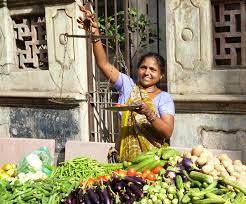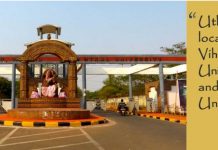Bhubaneswar: Women in the remotest areas of Odisha have to earn their livelihood by selling products in the street markets or daily markets. Districts like Koraput, Kalahandi, Balangir, Mayurbhanj are predominantly known as tribal areas. Women in these places are mostly the sole braid earners of their families. They earn their livelihood by the means of selling different kinds of everyday things in the roadside markets. It is a convenient source of getting things at a reasonable price for the buyers but for the sellers, it is an extremely, difficult source of livelihood which can be eliminated at any point in time as there is no certainty in it.
In every situation of crisis, the poor and downtrodden become doubly vulnerable and bear the brunt of it. Their suffering multiplies irrespective of the nature of the circumstance. One such section is street vendors/ hawkers, especially women, in remote parts of Odisha. Talking about the districts mentioned above, as they are mostly dominated by the tribal communities, women are the primary braid winners of their families. The women, here, earn their daily livelihoods by selling vegetables, fruits, berries, and things that they collect from forests on the roadside. With the advent of covid-19 and sudden imposition of consecutive lockdowns and shutdowns, they lost their daily earnings which was the only source to run their house. The women were restricted from moving outside and selling their products, which forced them to carry the products to the doorstep and sell at a meagre price.
As it is known as an informal and unorganised market and the vendor has no licence, it becomes more vulnerable in the case of a pandemic line situation where the women vendors faced huge difficulty in keeping their homes run. The tribal women have to travel long distances every day for selling their products which are far more fresh, pure and organic than the goods available in our fancy, well-organised supermarkets. But the price of their items is way lesser than the supermarkets. Yet, despite the better accessibility of essential items at the dour step people consider these women as potential carriers of the virus, so they have often been shoved away.
During the pandemic, they were blocked by the systematic containment zones and home isolation, which is why their already vulnerable economic condition is heightened further comprising lack of income and work as well. Moreover, due to their economic constraints, their health issues are also neglected. In the precarious situation of a pandemic hit, some women vendors who are the only earning members of their families, the husband is alcoholic, children are hungry so they are compelled to step out to sell goods by walking door to door for running their house. Likewise, a woman who sells flowers near the temple would have been hit hard because of the prolonged closure of the temples during the covid situation.
The pandemic had affected each section of society differently. When it comes to remote and tribal populated areas, it has made the female hawkers in a pathetic condition. Social distancing and isolation is a privilege for the rich, affluent and city dwellers but it became a curse for the vendors as their survival depends on selling products in daily markets. Work from home was not a feasible option for them. Therefore a stringent awareness program should be done to make these women aware of the importance of sanitisation, the use of masks and the gravity of the virus. However, a full-fledged campaign needs to be conducted to eliminate these street vendors from treating with the stigma of covid carriers. The government needs to take sufficient actions towards the implementation of Street Vendors Protection Of Livelihoods and Regulation of Street Vending Act, 2014. Even after six years, this law came into place it jas not been implemented properly indicating the factors behind the street vendors facing such precarious conditions.
-OdishaAge



















